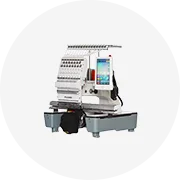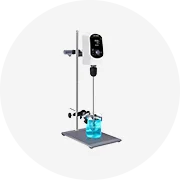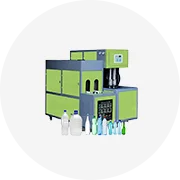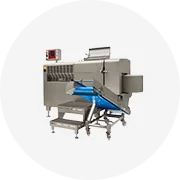Types of Air Conditioner Condenser Coils
The air conditioner condenser coils are a vital component in the cooling system of an air conditioning unit. These coils function as heat exchangers, allowing the refrigerant to release absorbed heat from inside the building into the outdoor environment. This process is essential for maintaining indoor comfort by lowering temperatures and dehumidifying the air.
Condenser coils are typically made from materials that balance thermal conductivity, durability, and cost-effectiveness. The most common materials used include steel, aluminum, and copper, each with distinct advantages and disadvantages based on their properties:
Steel Coils
Steel condenser coils are known for their exceptional strength and resilience, making them ideal for heavy-duty applications such as industrial air conditioners.
Advantages
- High durability and structural integrity
- Resistant to physical damage and deformation
- Long lifespan under demanding conditions
Limitations
- Poorer thermal conductivity compared to copper or aluminum
- Heavier than other materials
- May require additional corrosion protection
Best for: Industrial-grade units, environments with high mechanical stress
Aluminum Coils
Aluminum is the most commonly used material for residential condenser coils due to its lightweight nature and good thermal conductivity.
Advantages
- Lightweight and easy to install
- Good heat transfer efficiency
- Cost-effective manufacturing
Limitations
- Prone to corrosion over time, especially in coastal areas
- Less durable than steel or copper
- May develop leaks more easily
Best for: Residential AC units, budget-friendly systems
Copper Coils
Copper is widely regarded as the premium material for condenser coils due to its excellent thermal conductivity and corrosion resistance.
Advantages
- Superior heat transfer capabilities
- Excellent corrosion resistance
- Long service life with minimal maintenance
Limitations
- Higher material cost compared to aluminum and steel
- More expensive repair and replacement
- Subject to theft due to metal value
Best for: High-efficiency systems, premium HVAC installations
Hybrid (Copper-Aluminum)
Some modern condensers use a hybrid design combining copper tubing with aluminum fins to optimize performance and cost.
Advantages
- Balances efficiency and affordability
- Good thermal performance
- Corrosion-resistant when properly coated
Limitations
- Potential for galvanic corrosion if not insulated properly
- Not as durable as all-copper systems
- May degrade faster in harsh climates
Best for: Mid-range residential and commercial systems
Common Types of Air Conditioners Featuring Condenser Coils
Condenser coils are integrated into various types of air conditioning systems, each designed to meet specific cooling needs and installation requirements:
- Central Air Conditioners: The most popular choice for whole-house cooling, central air conditioners feature an outdoor unit housing the condenser coil and compressor. The system uses ductwork to distribute cooled air throughout the home. Central units often utilize copper or aluminum coils depending on the model’s efficiency rating and price point.
- Window Air Conditioners: Designed for single-room cooling, window units contain all components—including the condenser coil—in a compact casing that fits into a window frame. These units typically use aluminum coils for cost-effectiveness and lighter weight.
- Portable Air Conditioners: Portable units offer flexibility for cooling small spaces without permanent installation. They have internal condenser coils and exhaust hot air through a hose vented out a window. Most portable models use aluminum coils for portability and lower cost.
- Split Air Conditioners: Split systems consist of an outdoor unit containing the condenser coil and compressor, and one or more indoor units responsible for distributing cooled air. These systems are ideal for homes without ductwork and can use either copper or hybrid coils for optimal performance.
| Material | Thermal Efficiency | Durability | Cost-Effectiveness | Typical Applications |
|---|---|---|---|---|
| Steel | Moderate | Excellent | Fair | Industrial units, high-stress environments |
| Aluminum | Good | Fair | Excellent | Residential ACs, budget systems |
| Copper | Excellent | Very Good | Fair | Premium systems, high-efficiency units |
| Hybrid (Cu/Al) | Good | Good | Good | Mixed-use residential/commercial setups |
Expert Tip: When selecting an air conditioner, consider your local climate and environmental factors. In coastal regions or humid areas, opt for copper or coated aluminum coils to prevent premature corrosion and extend the life of your unit.
Specifications and Maintenance of Air Conditioner Condenser Coil Machines
Maintaining your air conditioner's condenser coil machine is essential for ensuring efficient cooling performance, prolonging the system’s lifespan, and reducing energy consumption. The condenser coil plays a critical role in releasing heat from your home to the outside environment. Over time, dust, dirt, and environmental debris can accumulate on these coils, significantly impacting their efficiency. Regular maintenance not only keeps your AC running smoothly but also helps prevent costly repairs and improves indoor comfort.
Key Maintenance Practices
One of the most important maintenance tasks is cleaning the condenser coils. Dust, leaves, dirt, and other airborne particles can settle on the coils, especially since they are typically installed outdoors. These contaminants restrict airflow, forcing the condenser to work harder to expel heat, which leads to higher energy bills and increased wear on the unit.
Use a soft brush or vacuum with a soft-bristled attachment to gently remove loose debris. For stubborn dirt buildup, apply a mild soapy water solution and wipe the coils carefully with a soft cloth. Avoid using high-pressure water or abrasive tools that could bend or damage the delicate fins. It's recommended to clean the coils at least once every season, more frequently if you live in a dusty or high-pollen area.
Proper airflow around the condenser coil is crucial for optimal performance. Ensure there is at least two feet of clearance on all sides of the outdoor unit. Plants, furniture, fences, or other objects placed too close can block airflow, reduce efficiency, and cause overheating.
Regularly inspect the area surrounding the condenser and remove any obstructions. Trim back bushes or shrubs and clear away fallen leaves, grass clippings, or other yard debris that may accumulate near the unit after mowing or windy weather.
Over time, condenser coils can suffer from bent or broken fins due to physical impact, severe weather, or improper handling during cleaning. Even minor damage can impair airflow and reduce the condenser’s ability to release heat efficiently.
Visually inspect the coils periodically for signs of damage. If you notice bent fins, use a fin comb (a specialized tool available at HVAC supply stores) to carefully straighten them. Severely damaged or corroded coils may need professional repair or replacement to restore proper function.
While many maintenance tasks can be performed by homeowners, it's highly recommended to have a certified HVAC technician conduct a thorough inspection and servicing at least once a year—ideally before the cooling season begins.
A professional service includes deep cleaning of the coils, checking refrigerant levels, inspecting electrical components, lubricating moving parts, and identifying potential issues before they become major problems. This proactive approach ensures maximum efficiency, extends equipment life, and maintains warranty coverage.
The condenser coil relies on proper refrigerant circulation to transfer heat effectively. Low refrigerant levels can result from leaks or improper charging, while overcharging can lead to excessive pressure and compressor damage.
Only licensed professionals should handle refrigerant-related tasks due to environmental regulations and safety concerns. If your AC is not cooling properly or you hear hissing or bubbling sounds, contact a technician to check and adjust refrigerant levels as needed.
Outdoor condenser units are exposed to various weather elements such as heavy rain, snow, ice, and strong winds. Prolonged exposure to extreme conditions can cause rust, corrosion, or mechanical stress on the coil fins and housing.
Consider installing a protective cover or shield designed specifically for your condenser model. However, avoid completely enclosing the unit, as this can trap moisture and restrict airflow. Covers should be removed during operation to allow proper ventilation and prevent overheating.
Important: Always turn off the power to the condenser unit before performing any maintenance tasks. Safety first! If you're unsure about any aspect of condenser coil care, consult with a qualified HVAC technician to avoid injury or equipment damage.
Common Issues and Preventative Measures
| Issue | Description | Preventative Action |
|---|---|---|
| Dust Buildup | Reduces airflow and heat dissipation | Regular brushing/vacuuming; seasonal deep cleaning |
| Bent Fins | Restricts airflow and lowers efficiency | Careful cleaning; use of fin comb |
| Obstructed Airflow | Causes overheating and inefficiency | Clear space around unit; trim nearby vegetation |
| Refrigerant Leak | Leads to poor cooling and system strain | Annual refrigerant check by technician |
| Weather Damage | Corrosion, dents, or mechanical failure | Install protective cover; inspect after storms |
How to Choose Air Conditioner Condenser Coil Machines
Selecting the right air conditioner condenser coil machine is essential for ensuring optimal cooling performance, energy efficiency, and longevity of your HVAC system. This guide will help you understand the key factors that influence your choice, enabling you to make an informed decision based on your specific needs.
Type of Condenser Coil Material
The material used in the condenser coil significantly affects its thermal conductivity, corrosion resistance, and overall durability. The two most common types are aluminum and copper coils, each with unique advantages suited to different environments and usage scenarios.
- Aluminum coils: Excellent corrosion resistance, especially beneficial in coastal or humid areas. They are lighter than copper but may not conduct heat as efficiently.
- Copper coils: Superior thermal conductivity allows for faster heat exchange, improving system efficiency. Copper is more durable and resistant to wear over time but can be prone to corrosion in aggressive environments.
- Hybrid options: Some modern units feature microchannel coils made from a combination of aluminum and other metals, offering balanced performance between conductivity and corrosion resistance.
Key consideration: In high-humidity or salt-exposed regions, aluminum or microchannel coils may offer better long-term reliability.
Size and Capacity
The size of the condenser coil must match the capacity of your air conditioning system to ensure efficient operation. A properly sized coil maintains proper refrigerant pressure and airflow, preventing undue strain on the compressor and extending the life of your unit.
- Oversized coils can cause inefficient operation and unnecessary energy consumption
- Undersized coils lead to overheating and premature component failure
- Match coil surface area to the tonnage of your AC unit (e.g., 1-ton systems require smaller coils than 5-ton systems)
Measurement tip: Consult your HVAC technician to determine the correct coil size based on SEER rating, system tonnage, and home square footage.
Brand Reputation and Support
Choosing a condenser coil from a reputable manufacturer ensures quality construction, reliable performance, and access to comprehensive support services. Established brands typically invest in research and development to improve efficiency and durability while adhering to industry standards.
- Look for brands with proven track records in HVAC manufacturing
- Check for certifications such as AHRI (Air-Conditioning, Heating, and Refrigeration Institute) compliance
- Consider availability of replacement parts and technical support
- Review warranty terms – longer warranties often indicate confidence in product quality
Performance impact: Quality brands often provide better heat transfer rates and corrosion protection than generic alternatives.
Price vs. Value Consideration
While budget considerations are important, it's crucial to evaluate the long-term value when selecting a condenser coil. Cheaper options may save money upfront but could result in higher maintenance costs and reduced system efficiency over time.
- Entry-level coils offer basic functionality at lower cost but may need more frequent replacement
- Premium coils deliver superior performance and longer lifespan, potentially reducing energy bills
- Mid-range options often provide a good balance between cost and quality
- Factor in potential energy savings when calculating total cost of ownership
Smart investment: Spending slightly more on a high-quality coil can yield significant energy savings over several years.
Expert Advice: When replacing a condenser coil, always consider matching it with other system components for optimal compatibility. Mismatched coils and compressors can reduce efficiency by up to 30%. If unsure about specifications, consult a licensed HVAC professional who can assess your entire system and recommend the best solution tailored to your environment and usage patterns.
| Coil Type | Material | Thermal Conductivity | Corrosion Resistance | Lifespan | Best For |
|---|---|---|---|---|---|
| Tubular Fin Coils | Copper tubes with aluminum fins | High | Moderate | 10-15 years | Standard residential applications |
| Microchannel Coils | Extruded aluminum flat tubes | Moderate | High | 12-18 years | Coastal areas and high humidity zones |
| Stainless Steel Coils | Heavy-duty stainless steel | Low | Very High | 15+ years | Industrial and corrosive environments |
| All-Aluminum Coils | Aluminum tubes and fins | Moderate | High | 10-14 years | Budget-friendly solutions |
DIY Replacement Guide for Air Conditioner Condenser Coils
Replacing the condenser coil in your air conditioning unit can significantly improve its efficiency and cooling performance. While it's a moderately complex task, with the right tools and approach, many homeowners can complete this repair themselves. Always follow the manufacturer's instructions specific to your model, as variations exist between units.
Safety Warning: Working with electrical components and refrigerants poses risks. Ensure the power is completely disconnected before starting work. If you're uncomfortable handling refrigerant lines or electrical systems, consult a professional HVAC technician.
Essential Tools and Materials
- Safety glasses and gloves
- Set of metric and standard wrenches
- Flathead and Phillips screwdrivers
- Torx driver set (commonly used in modern AC units)
- Needle-nose pliers
- New condenser coils (OEM or compatible replacement)
- Slip-joint pliers
- Multimeter (for checking electrical continuity)
- Wire cutters/strippers
| Tool Category | Purpose | Alternative Options | Recommended Brands |
|---|---|---|---|
| Hand Tools | Disassembly and reassembly | Adjustable wrench if exact sizes unavailable | Klein Tools, Craftsman |
| Electrical Tools | Safe wire handling and testing | Basic voltage tester instead of multimeter | Fluke, Ideal |
| Protective Gear | Injury prevention | Work gloves if specialized gloves not available | 3M, Honeywell |
Detailed Step-by-Step Replacement Process
- Power Disconnection
- Locate the electrical disconnect box near your outdoor unit
- Flip the switch to OFF position
- Double-check by turning on the thermostat – system should not respond
- Verify no power at the unit using a non-contact voltage tester
- Access Panel Removal
- Remove screws securing the access panel using appropriate screwdriver
- Keep screws organized in a magnetic tray or container
- Take photos of wiring connections before removing anything
- Label all connections for easier reassembly
- Fan Wire Disconnection
- Use needle-nose pliers to carefully disconnect wire connectors
- Wrap exposed ends with electrical tape to prevent shorts
- Note any color-coding or labeling on wires for correct reconnection
- Consider taking close-up photos of wire routing
- Fan Removal
- Mark the fan blade position relative to the motor shaft
- Remove bolts or screws securing the fan assembly
- Gently lift the fan straight up to avoid damaging surrounding fins
- Clean debris from fan blades while removed
- Old Coil Removal
- Loosen and remove mounting brackets securing the old coil
- Disconnect refrigerant lines using two wrenches to prevent twisting
- Cap lines immediately to prevent moisture contamination
- Document the orientation and placement of all removed components
- New Coil Installation
- Position new coils aligning with mounting points and refrigerant ports
- Connect refrigerant lines with new O-rings, using proper torque specifications
- Secure mounting brackets ensuring even pressure distribution
- Replace access panel with original fasteners
- Reassembly and Reconnection
- Reinstall the fan following reverse removal procedure
- Reconnect electrical wires according to your labels/photos
- Ensure all connections are tight but not over-tightened
- Replace any removed insulation or protective covers
- System Restart and Testing
- Restore power at the disconnect box
- Set thermostat to cooling mode at lowest temperature
- Listen for normal compressor operation after startup
- Monitor system for 15-20 minutes to ensure proper cooling cycle
Expert Tip: Before installing the new coils, clean the interior of the condenser cabinet with a soft brush and vacuum to remove accumulated dirt and debris. This helps maintain optimal airflow and prevents future issues.
Important Note: If your system uses refrigerant lines that require brazing or soldering, this task should be performed by a licensed HVAC technician. Improper refrigerant handling can damage the system and may violate environmental regulations.
Troubleshooting Common Issues After Replacement
- If the system doesn't start: Check circuit breaker, disconnect switch, and thermostat settings
- If there's reduced airflow: Verify fan rotation direction and check for installation obstructions
- If cooling seems inadequate: Monitor refrigerant pressures (requires gauges) or contact a professional technician
- If unusual noises occur: Shut down the system immediately and inspect for loose components or improper installation
Frequently Asked Questions
The air conditioner condenser coil is a critical component of the cooling system, typically located in the outdoor unit of the AC system. Its primary function is to release heat that has been collected from inside the building into the outside air. The condenser coil works by allowing high-pressure, high-temperature refrigerant gas to flow through it, where it is cooled and converted into a liquid state by transferring its heat to the surrounding air.
When the condenser coil is clean and free of debris, the heat exchange process operates efficiently. This allows for better airflow and less strain on the compressor and fan motor, ultimately improving energy efficiency and prolonging the life of the air conditioning system. Regular maintenance such as cleaning the coils can significantly enhance performance and reduce electricity consumption.
An air conditioner operates using a continuous cycle of heat absorption and release, facilitated by a refrigerant. Here's a simplified breakdown of the process:
- Indoor Heat Absorption: Warm indoor air passes over the evaporator coil (located indoors), where the refrigerant absorbs heat and turns into a gas.
- Compression: The gaseous refrigerant moves to the compressor, which increases its pressure and temperature.
- Outdoor Heat Release: The hot, pressurized gas flows into the condenser coil (located outdoors), where it releases heat to the outside air and condenses back into a liquid.
- Expansion: The liquid refrigerant passes through an expansion valve, reducing its pressure and temperature before returning to the evaporator to start the cycle again.
This thermodynamic cycle effectively removes heat from the indoor environment and transfers it outside, resulting in cooler indoor temperatures. Modern systems also include features like variable-speed fans and smart thermostats to optimize comfort and efficiency.
In the context of air conditioning systems, the terms "coil" and "condenser" are often used interchangeably, but they refer to different components depending on their function within the system:
| Component | Function | Location |
|---|---|---|
| Condenser Coil | Releases heat from the refrigerant to the outside air | Outdoor unit |
| Evaporator Coil | Absorbs heat from indoor air | Indoor unit (often near furnace or air handler) |
While both are types of coils, the term "condenser" specifically refers to the coil responsible for condensing the refrigerant from a gas back into a liquid after releasing its heat. Therefore, not all coils are condensers, but the condenser is always a type of coil. Understanding this distinction helps in diagnosing issues and performing proper maintenance on HVAC systems.










































